Abstract
The effects of the triethyl analogue of choline (triethyl 2-hydroxyethyl ammonium) on muscular activity have been studied in conscious rabbits, chicks, dogs and a cat. The contractions of the tibialis anticus and soleus muscles of cats under chloralose anaesthesia, and of the tibialis anticus muscle of rabbits under urethane anaesthesia and the isolated diaphragm preparation of the rat were also used. In conscious animals, triethylcholine caused a slowly developing muscular weakness which was more severe after exercise and which resembled the symptoms of myasthenia gravis. In nerve-muscle preparations triethylcholine had a selective action in reducing the contractions of muscles elicited by a high rate of nerve stimulation while leaving unaffected the contractions caused by slower rates of stimulation. During the paralysis of the tibialis muscle of the cat produced by triethylcholine, action potentials recorded from the motor nerve were unaffected and the muscle responded normally to injected acetylcholine and to direct electrical stimulation. The failure of neuromuscular transmission produced by triethylcholine was reversed by injection of choline, but anticholinesterases were ineffective. Choline reduced the toxicity of triethylcholine in mice. It is concluded that triethylcholine produces transmission failure at the neuromuscular junction by interfering with the ability of the nerve endings to synthesize acetylcholine. The possibility that triethylcholine is itself acetylated by the nerve endings and released as an inactive neurohormone is discussed. It was shown that triethylcholine was devoid of depolarizing action and curare-like blocking action. It possesses a transient ganglion blocking action of the tetraethylammonium-type as shown in experiments in which it caused a fall in blood pressure and blocked the response of the nictitating membrane to pre- but not to post-ganglionic stimulation of the cervical sympathetic nerve.
Full text
PDF
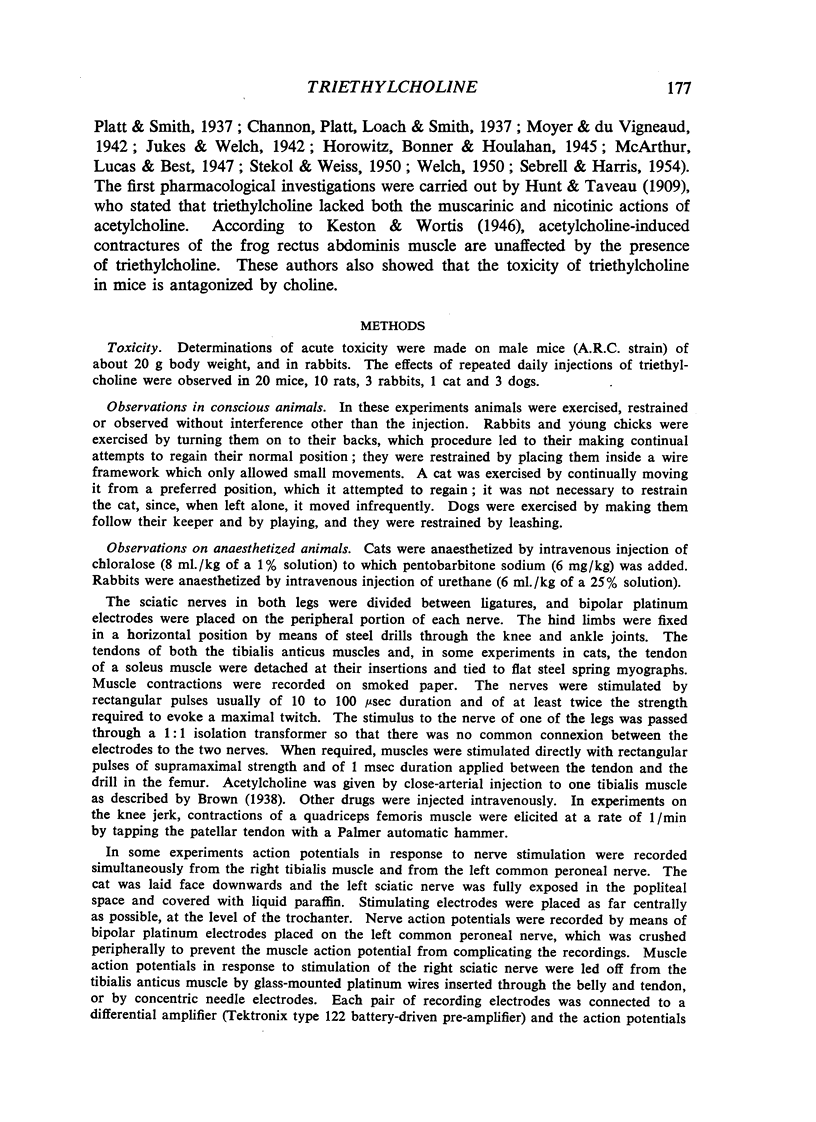
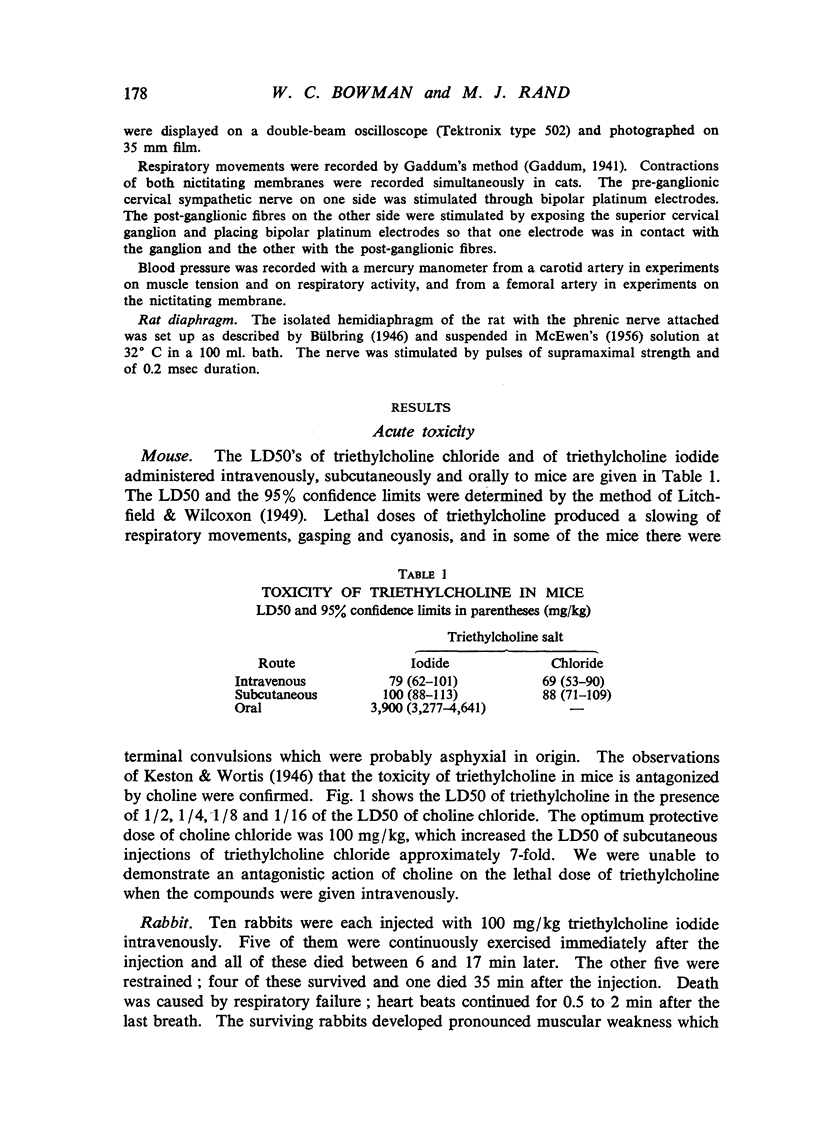
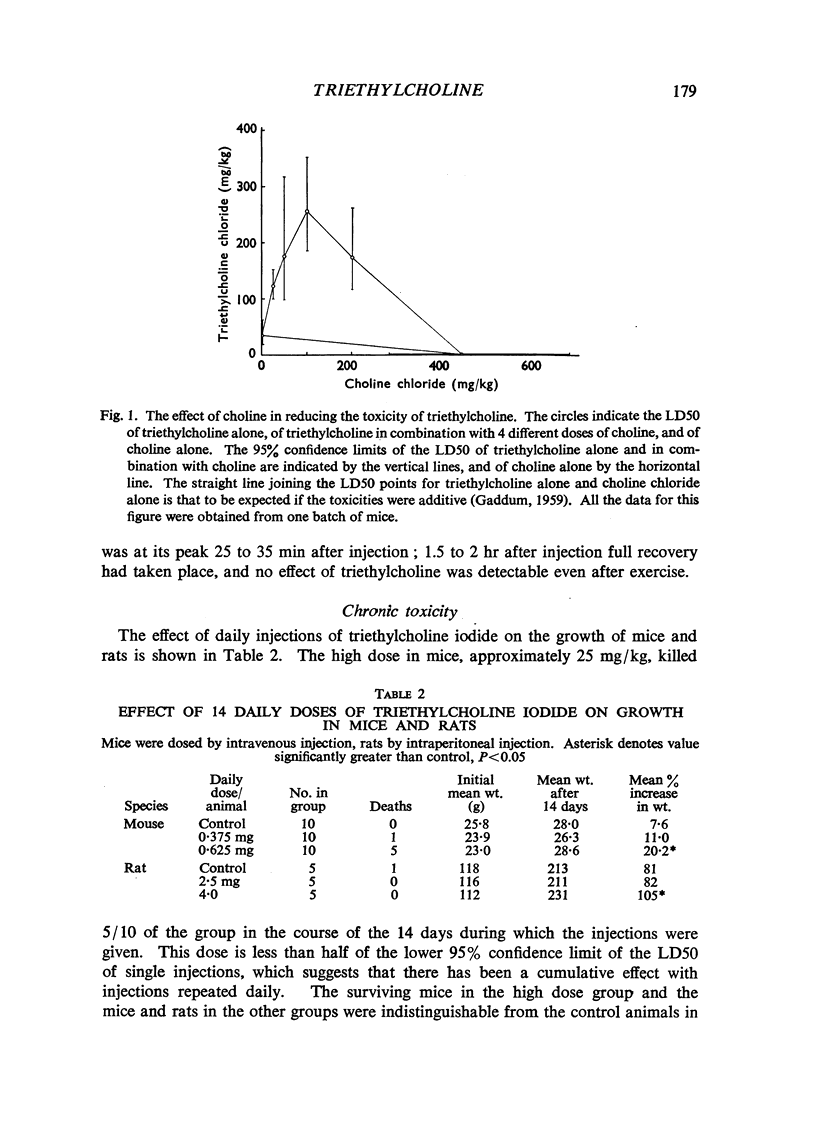
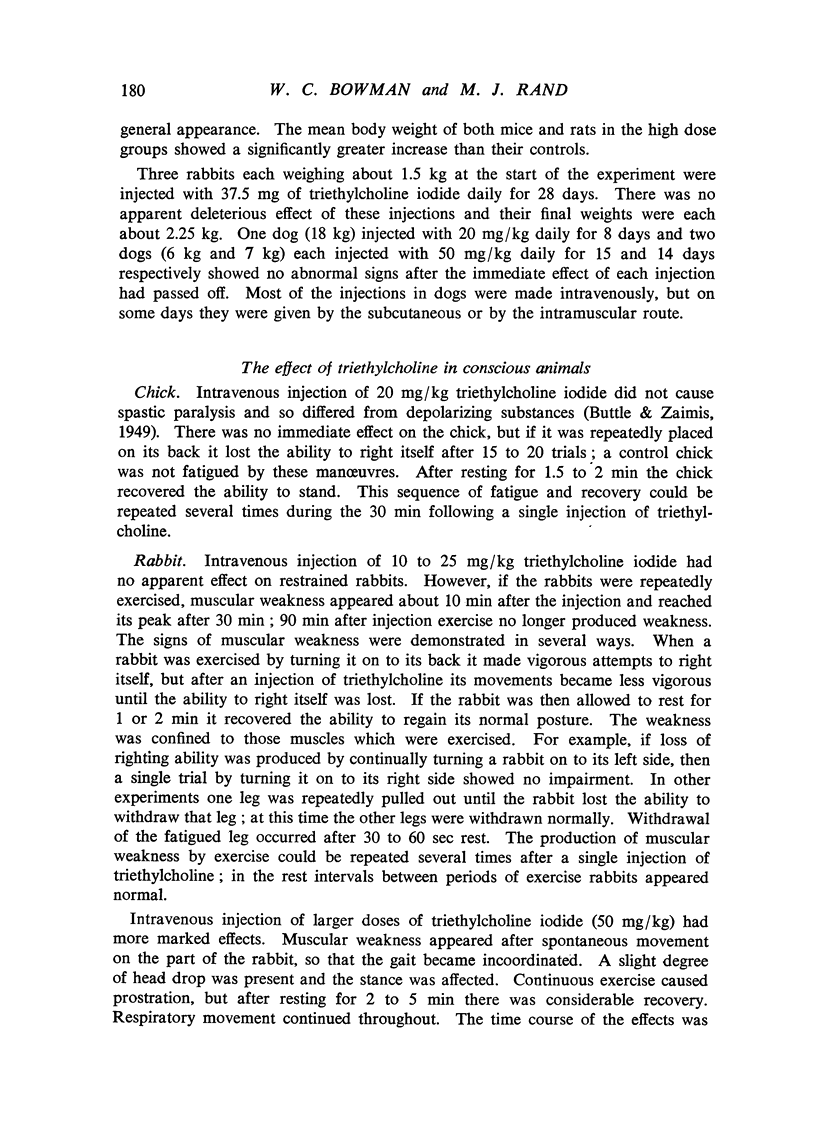
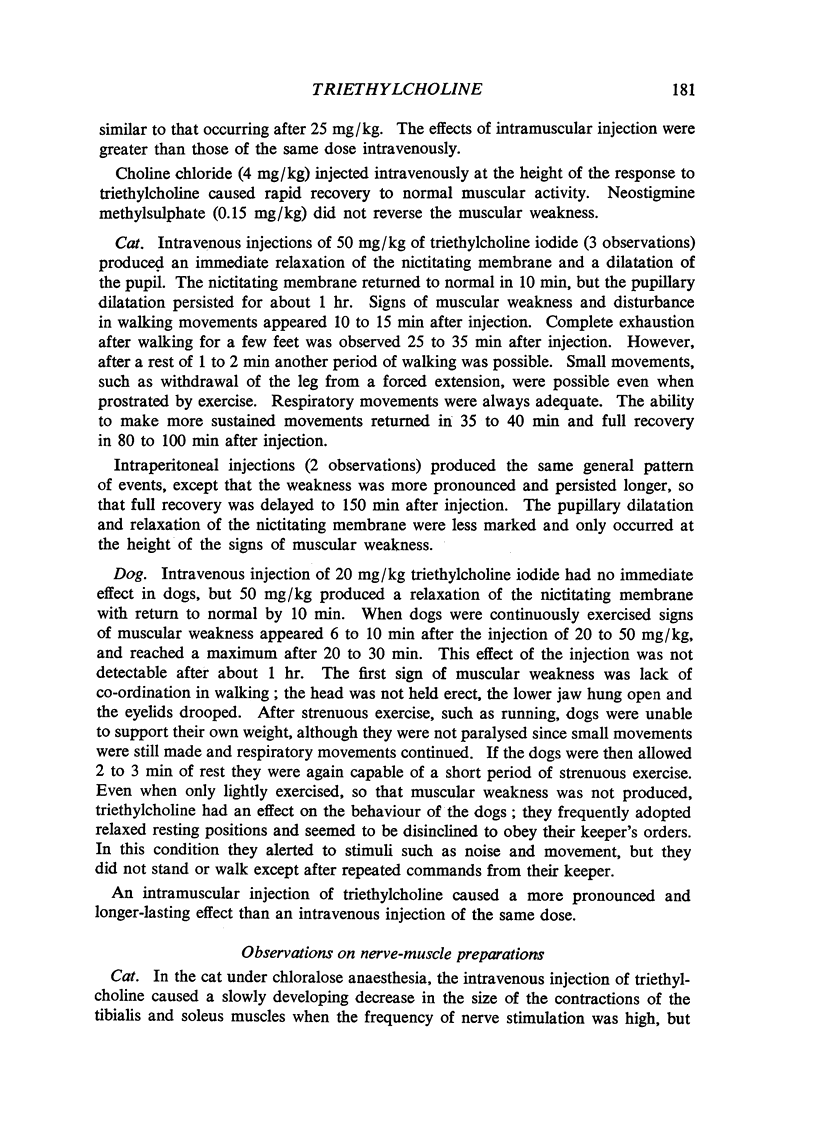
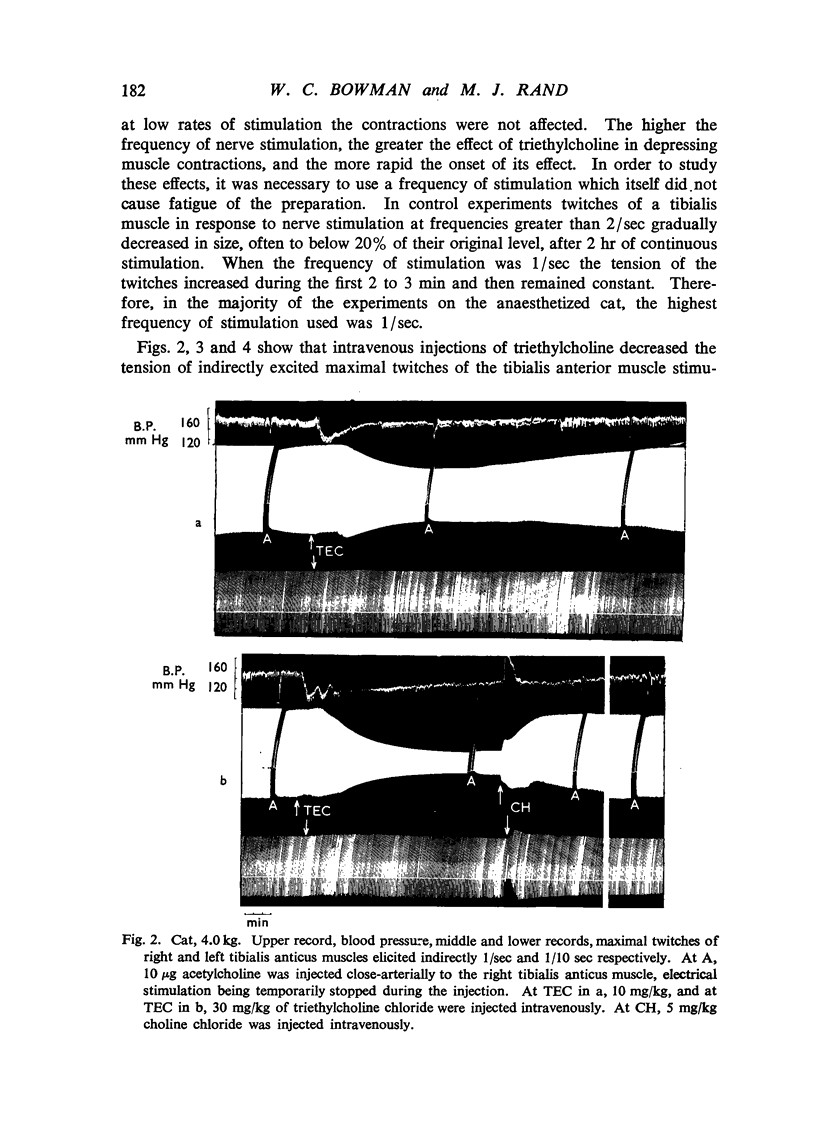
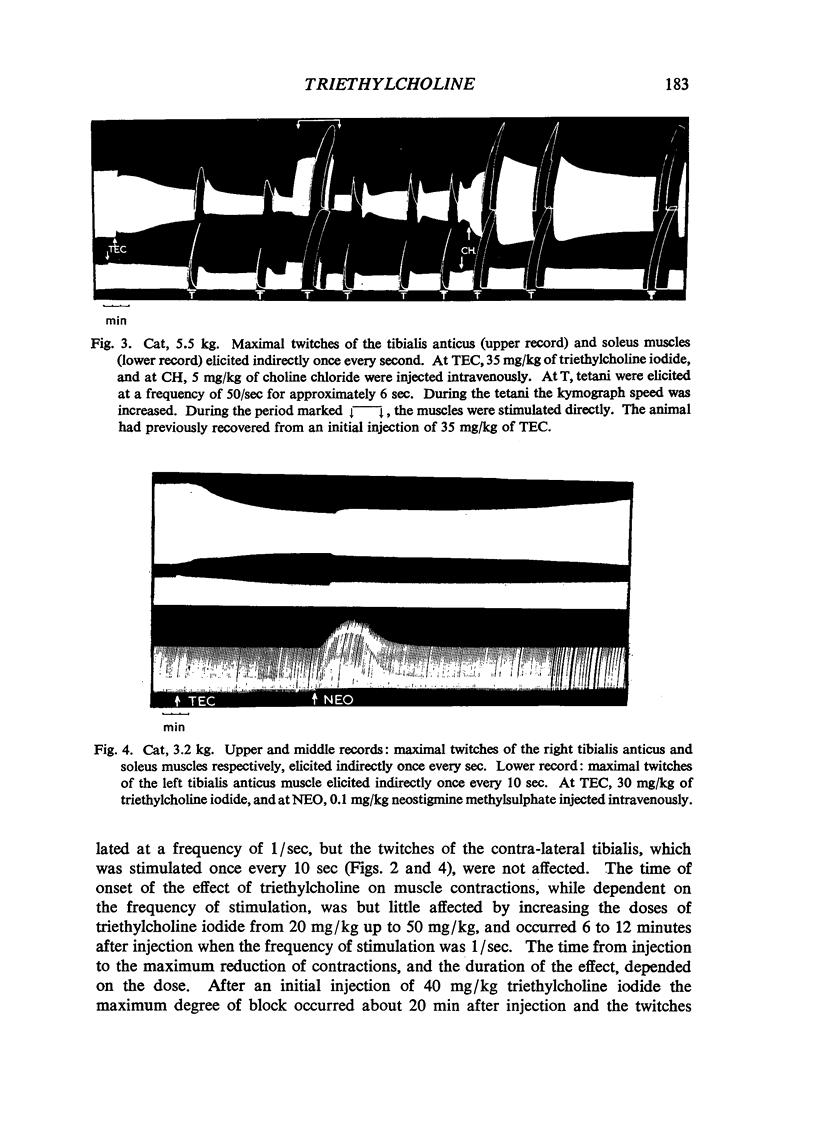


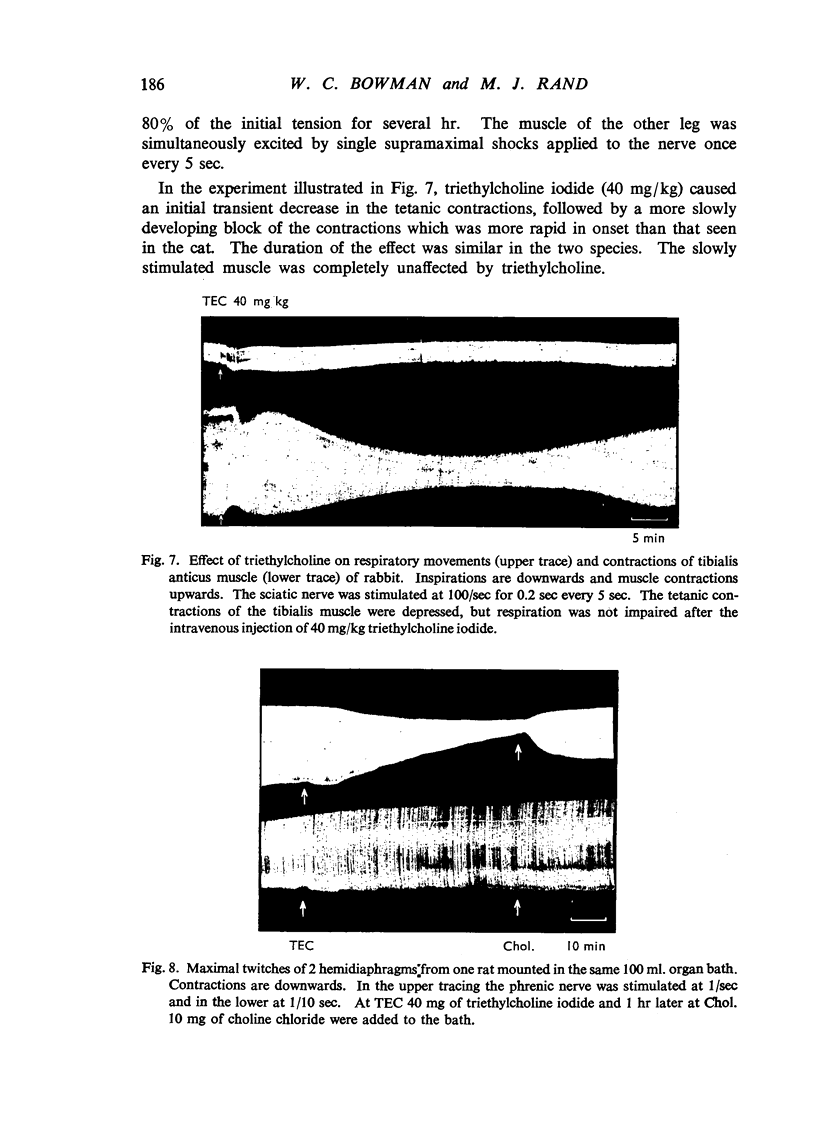
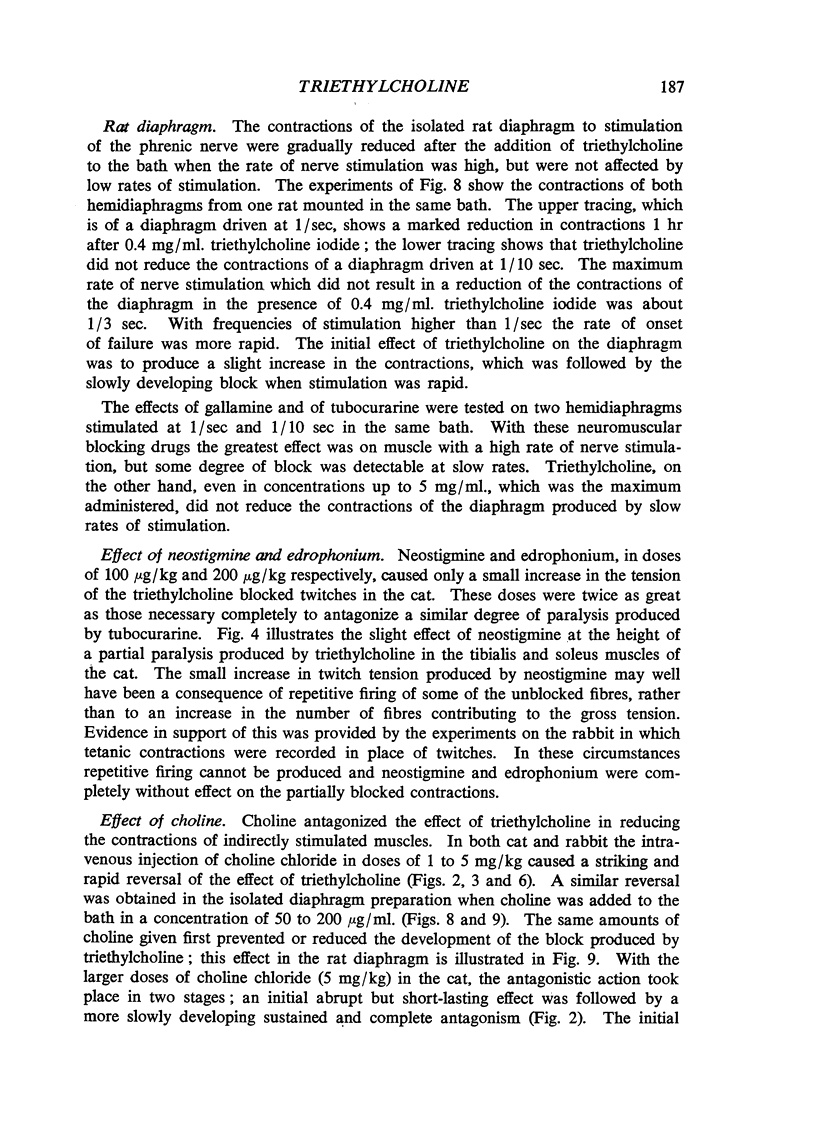
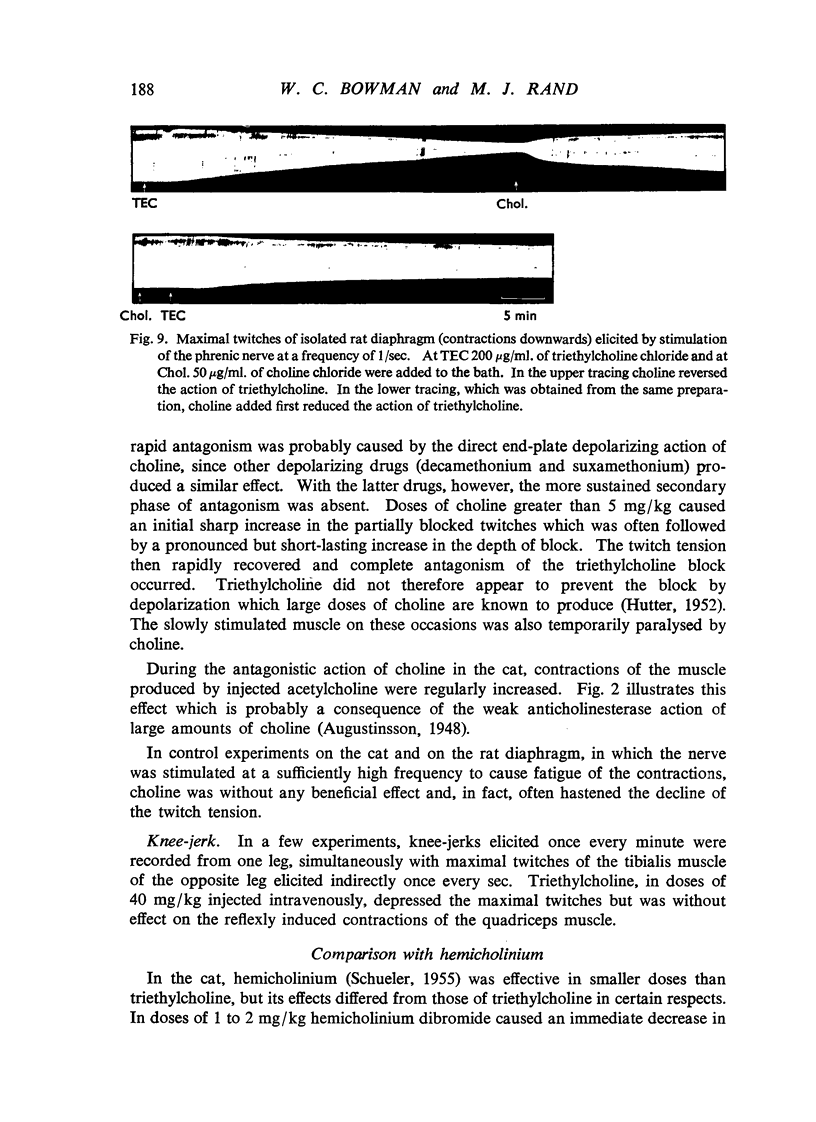

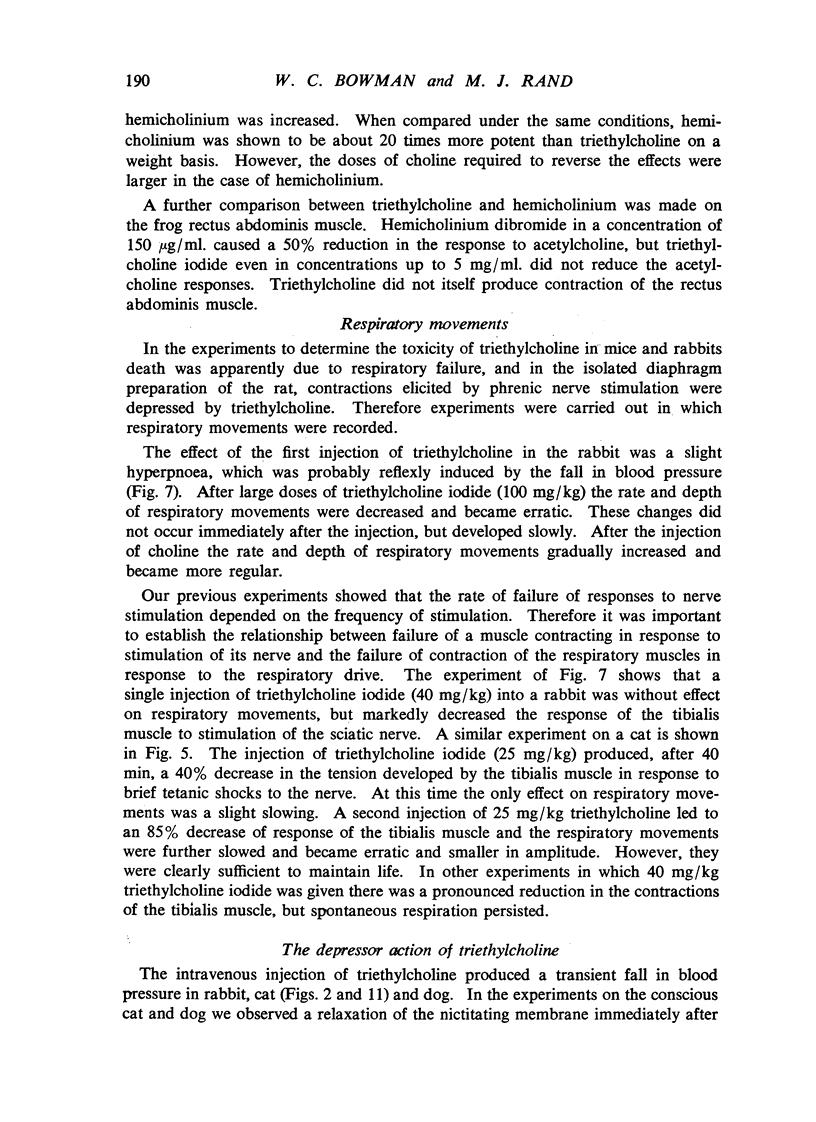
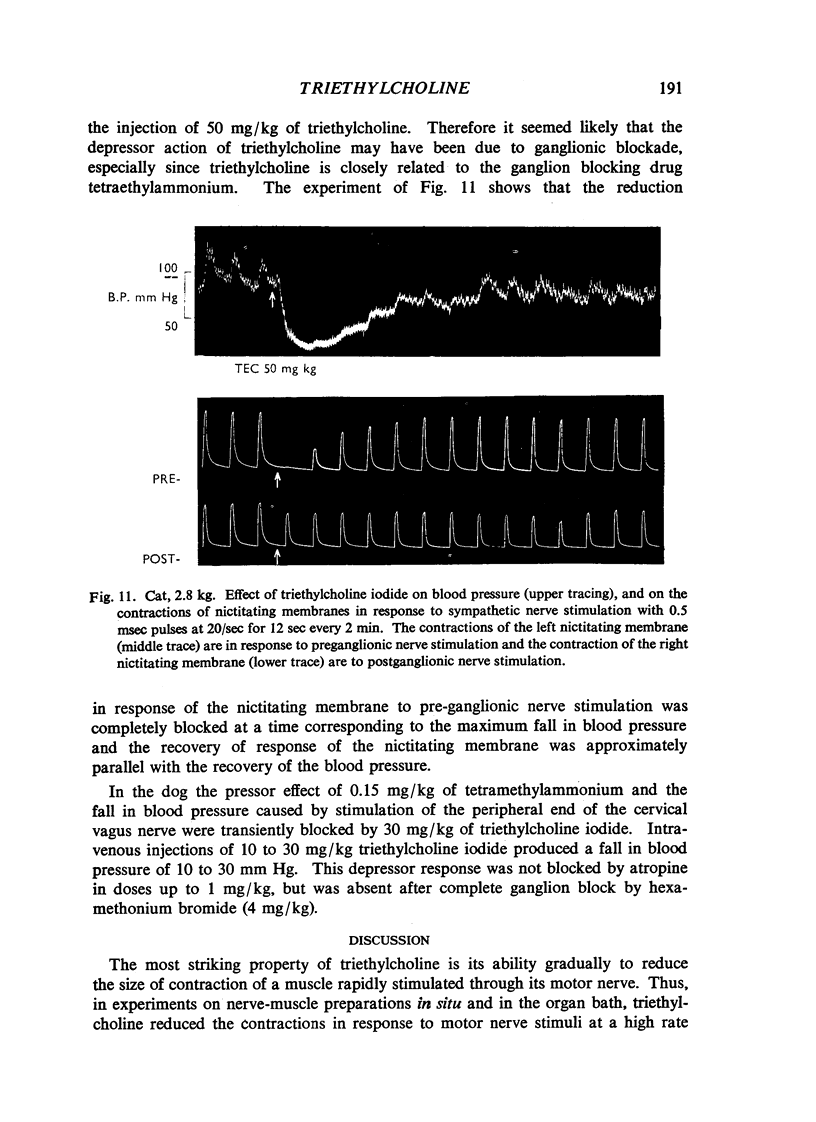
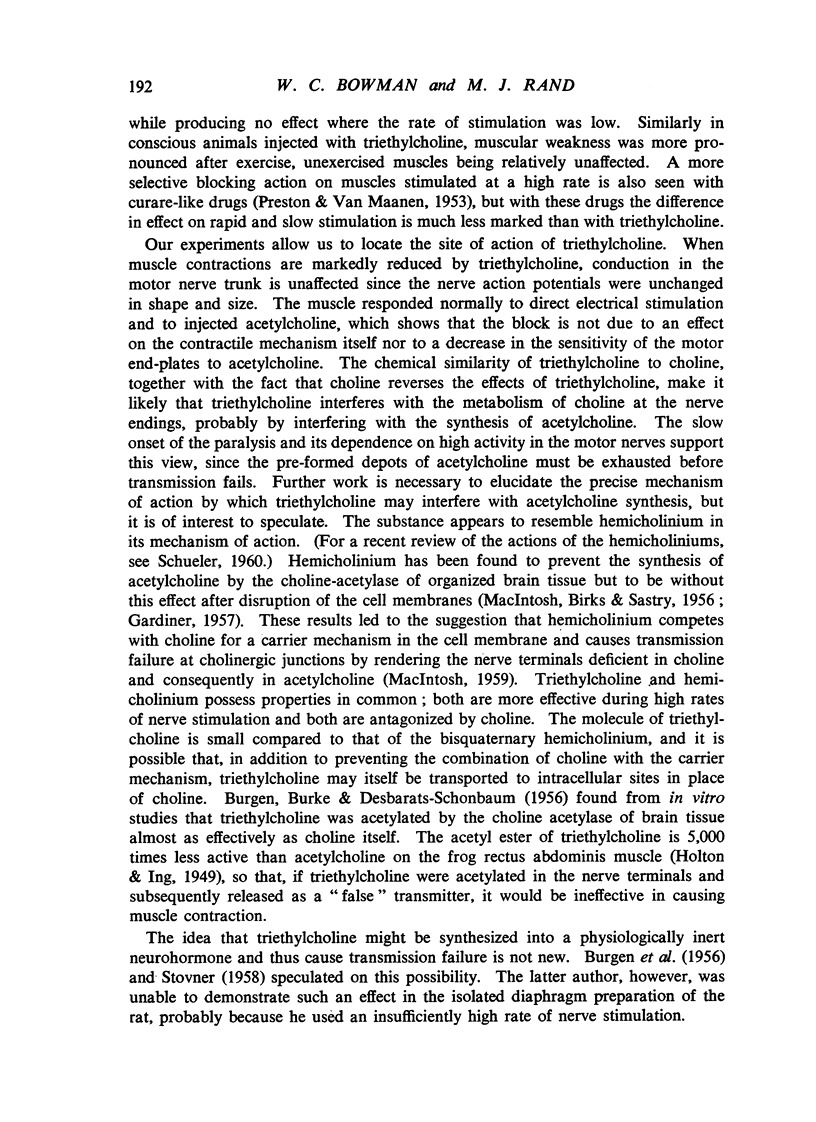
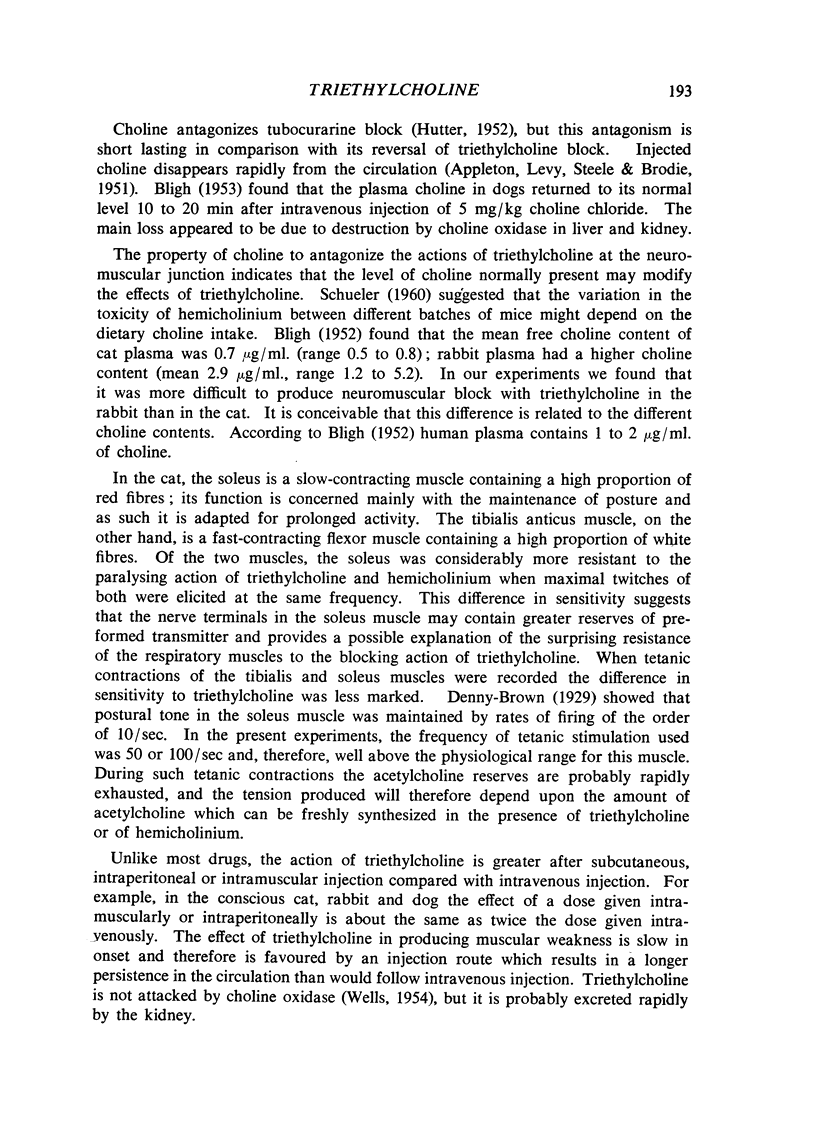
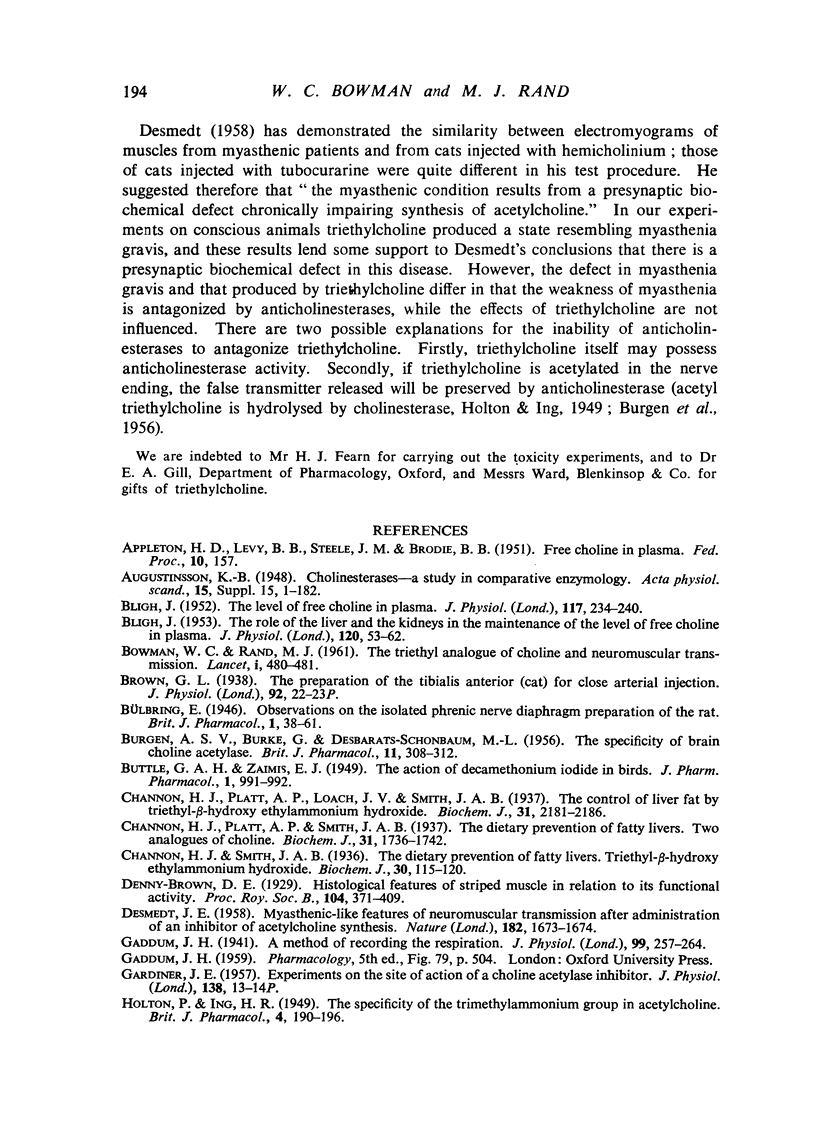
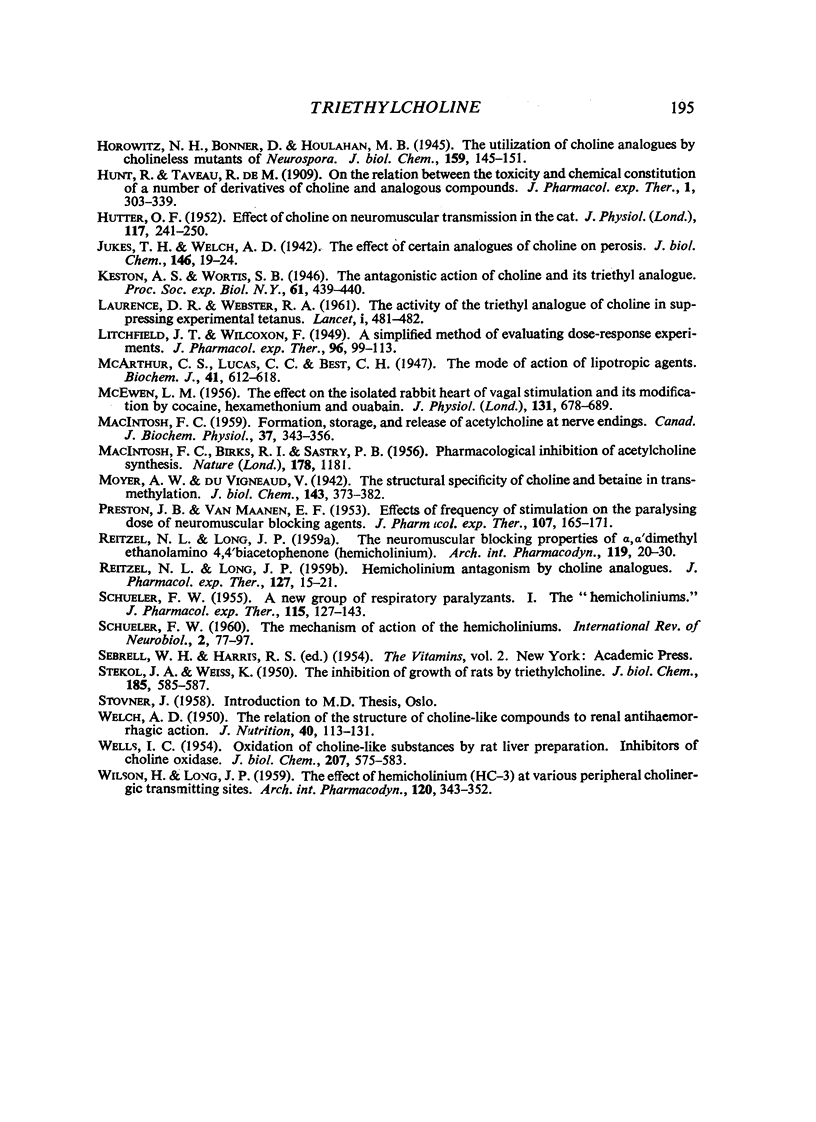
Selected References
These references are in PubMed. This may not be the complete list of references from this article.
- BIRKS R. I., MACINTOSH F. C., SASTRY P. B. Pharmacological inhibition of acetylcholine synthesis. Nature. 1956 Nov 24;178(4543):1181–1181. doi: 10.1038/1781181a0. [DOI] [PubMed] [Google Scholar]
- BLIGH J. The level of free choline in plasma. J Physiol. 1952 Jun;117(2):234–240. doi: 10.1113/jphysiol.1952.sp004743. [DOI] [PMC free article] [PubMed] [Google Scholar]
- BLIGH J. The role of the liver and the kidneys in the maintenance of the level of free choline in plasma. J Physiol. 1953 Apr 28;120(1-2):53–62. doi: 10.1113/jphysiol.1953.sp004872. [DOI] [PMC free article] [PubMed] [Google Scholar]
- BURGEN A. S., BURKE G., DESBARATSSCHONBAUM M. L. The specificity of brain choline acetylase. Br J Pharmacol Chemother. 1956 Sep;11(3):308–312. doi: 10.1111/j.1476-5381.1956.tb01071.x. [DOI] [PMC free article] [PubMed] [Google Scholar]
- Channon H. J., Platt A. P., Loach J. V., Smith J. A. The control of liver fat by triethyl-beta-hydroxyethylammonium hydroxide. Biochem J. 1937 Dec;31(12):2181–2186. doi: 10.1042/bj0312181. [DOI] [PMC free article] [PubMed] [Google Scholar]
- Channon H. J., Platt A. P., Smith J. A. The dietary prevention of fatty livers. Two analogues of choline. Biochem J. 1937 Oct;31(10):1736–1742. doi: 10.1042/bj0311736. [DOI] [PMC free article] [PubMed] [Google Scholar]
- Channon H. J., Smith J. A. The dietary prevention of fatty livers. Triethyl-beta-hydroxyethylammonium hydroxide. Biochem J. 1936 Jan;30(1):115–120. doi: 10.1042/bj0300115. [DOI] [PMC free article] [PubMed] [Google Scholar]
- DESMEDT J. E. Myasthenic-like features of neuromuscular transmission after administration of an inhibitor of acetylcholine synthesis. Nature. 1958 Dec 13;182(4650):1673–1674. doi: 10.1038/1821673a0. [DOI] [PubMed] [Google Scholar]
- Gaddum J. H. A method of recording the respiration. J Physiol. 1941 Jan 14;99(2):257–264. doi: 10.1113/jphysiol.1941.sp003899. [DOI] [PMC free article] [PubMed] [Google Scholar]
- HUTTER O. F. Effect of choline on neuromuscular transmission in the cat. J Physiol. 1952 Jun;117(2):241–250. doi: 10.1113/jphysiol.1952.sp004744. [DOI] [PMC free article] [PubMed] [Google Scholar]
- LAURENCE D. R., WEBSTER R. A. Activity of the triethyl analogue of choline in suppressing experimental tetanus. Lancet. 1961 Mar 4;1(7175):481–482. doi: 10.1016/s0140-6736(61)90062-9. [DOI] [PubMed] [Google Scholar]
- MACINTOSH F. C. Formation, storage, and release of acetylcholine at nerve endings. Can J Biochem Physiol. 1959 Feb;37(2):343–356. [PubMed] [Google Scholar]
- MCEWEN L. M. The effect on the isolated rabbit heart of vagal stimulation and its modification by cocaine, hexamethonium and ouabain. J Physiol. 1956 Mar 28;131(3):678–689. doi: 10.1113/jphysiol.1956.sp005493. [DOI] [PMC free article] [PubMed] [Google Scholar]
- McArthur C. S., Lucas C. C., Best C. H. The mode of action of lipotropic agents: Proof of the in vivo incorporation of triethyl-beta-hydroxyethyl-ammonium hydroxide into the phospholipid molecule. Biochem J. 1947;41(4):612–618. doi: 10.1042/bj0410612. [DOI] [PMC free article] [PubMed] [Google Scholar]
- PRESTON J. B., VAN MAANEN E. F. Effects of frequency of stimulation on the paralyzing dose of neuromuscular blocking agents. J Pharmacol Exp Ther. 1953 Feb;107(2):165–171. [PubMed] [Google Scholar]
- REITZEL N. L., LONG J. P. Hemicholinium antagonism by choline analogues. J Pharmacol Exp Ther. 1959 Sep;127:15–21. [PubMed] [Google Scholar]
- REITZEL N. L., LONG J. P. The neuromuscular blocking properties of alpha, alpha, dimethylethanolamino 4,4' biacetophenone (hemicholinium). Arch Int Pharmacodyn Ther. 1959 Mar 1;119(1-2):20–30. [PubMed] [Google Scholar]
- SCHUELER F. W. A new group of respiratory paralyzants. I. The "hemicholiniums". J Pharmacol Exp Ther. 1955 Oct;115(2):127–143. [PubMed] [Google Scholar]
- SCHUELER F. W. The mechanism of action of the hemicholiniums. Int Rev Neurobiol. 1960;2:77–97. doi: 10.1016/s0074-7742(08)60120-8. [DOI] [PubMed] [Google Scholar]
- STEKOL J. A., WEISS K. The inhibition of growth of rats by triethylcholine. J Biol Chem. 1950 Aug;185(2):585–587. [PubMed] [Google Scholar]
- WELCH A. D. The relation of the structure of choline-like compounds to renal antihemorrhagic action. J Nutr. 1950 Jan;40(1):113–131. doi: 10.1093/jn/40.1.113. [DOI] [PubMed] [Google Scholar]
- WELLS I. C. Oxidation of choline-like substances by rat liver preparations; inhibitors of choline oxidase. J Biol Chem. 1954 Apr;207(2):575–583. [PubMed] [Google Scholar]


